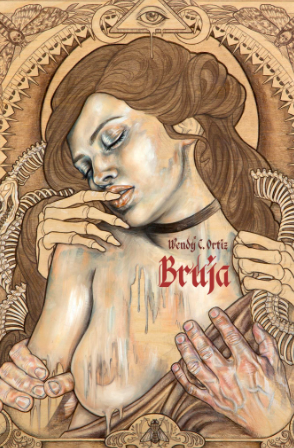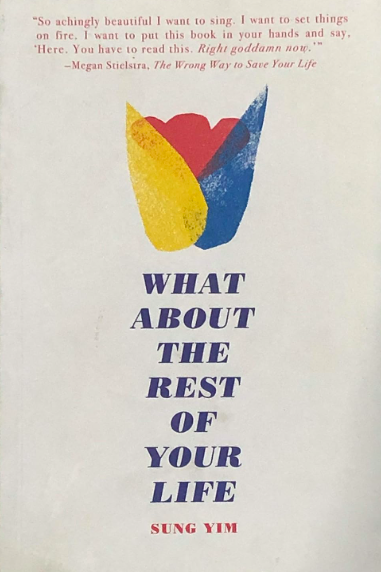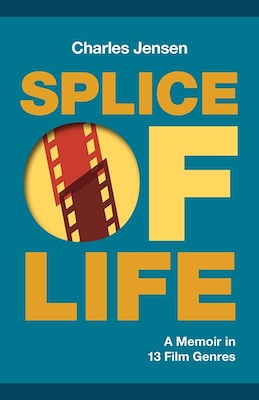The poet’s journey from writing verse to lyric essays to memoir is now a veritable pipeline, with more and more poets turning away from lines and stanzas to incorporate poetic techniques into prose. Poetry can often be rooted in memory already, using imagery and figurative language to explore the history of the self—or a “speaker” who “resembles” the self. Embracing memoir wholesale means removing the mask of the assumed persona in a poem’s speaker. The poet steps forward and says “This is who I am.” But as poets, these gestures are not always direct and straightforward. Poet memoirs have the capacity to deconstruct the new genre, to hybridize narrative and lyricism, and employ conceits, extended metaphor, and innovative forms to convey their stories.
I am a participant in this pipeline. My earliest poems did plumb the depths of memory for subjects and gestures, but over time I moved away from writing plainly about the self. My first book The First Risk employed persona all over the place, but by the time my third book, Instructions between Takeoff and Landing arrived, my lived experience was again my subject. Perhaps it’s no surprise that my next book, Splice of Life: A Memoir in 13 Film Genres reveals my life as its subject—at least partially. As a poet, I reserve the right to lyricize any space I enter. In this case, it’s to hybridize traditional memoir storytelling in each chapter with a discussion of a single film whose themes, plot, or symbols resonate with my story.
Here are 8 poet memoirs that, like hermit crabs, occupy memoir storytelling with poetic sensibilities.

Bruja by Wendy C. Ortiz
Ortiz dutifully documents her dreams upon waking, and Bruja is the fruit of this labor—a memoir of Ortiz’s subconscious dream life. Populated with the family and friends of her waking life, set against familiar locations, each entry hinges upon the acausal chain of events that roots our dreams. There’s an old joke about how boring it is to hear someone recount their dreams, but Ortiz’s book is gripping from the jump. One of her strengths as a writer is fearlessness. Her ugliest impulses, her deepest anxieties are on full display here. This memoir is perhaps one of the most refreshing for this reason: Ortiz makes no apologies or explanations for the content of her dreams, inviting the reader in to assess the remnants of her days. Instead of judgment, we find empathy here, and a feeling that even our own most troubling dreams are a normal function of living.
Dear Memory: Letters on Writing, Silence, and Grief by Victoria Chang
In the wake of her parents’ deaths, Chang uses the epistolary form to write letters to them, her daughters, her unnamed teachers and friends. These one-way communications are part confession, part investigation. Chang pieces together her family’s history with found documents, photos, half-remembered conversations, and notes, seeking at first to understand them but ultimately, it seems, to understand herself, her place in this world. Between the letters, Chang incorporates visual collages of modified photographs overlaid with snippets of text or writing. These visual art pieces reflect and resonate with the collaging within each letter. Memories weave together with philosophy, quotes from other writers, Chang’s own hopes and fears, and her lingering questions. What results is an unconventional memoir that, rather than recounting a specific story or experience, develops the writer’s sense of self—a way of becoming that would be unachievable without the stark reflection and vulnerability of these pages.
Digging to Wonderland: Memory Pieces by David Trinidad
Trinidad’s subtitle accurately reflects how this collection amounts to an annotated index of recollections. In a series of flash essays, Trinidad mines his lived experience for vivid Polaroids of people, places, and moments reaching all the way back to his childhood and young adulthood in the San Fernando Valley and Los Angeles, his years in New York City studying at Brooklyn College with Allen Ginsburg and the years that followed, and his more recent life in Chicago. Trinidad’s work tends to focus on the past, offering it back to us as a museum in poems, but here he allows memory’s inherent free association to run unbridled through each piece, demonstrating that a single moment in our lives is always part of a larger, more complex web of facts, feelings, and impressions.
Don’t Let Me Be Lonely: An American Lyric by Claudia Rankine
“I’m writing a book about the liver,” Rankine writes throughout this book as a kind of refrain that points toward the main idea of her project. In a series of recountings of personal and public events, Rankine peels back the veneer of American life to reveal the toxic underbelly of our culture, whether it’s a warmongering government, the senseless murders of Black people, the pharmaceutical industrial complex and its attendant maladies. The liver flushes toxins out of the body, and Rankine’s book transforms itself into a kind of cultural liver, gathering up what harms Black bodies in our country and, by naming it and documenting it, flushing away its power. Graywolf will release an expanded version of this book in July, twenty years after its original publication.
How to Say Babylon by Safiya Sinclair
Sinclair’s poetic sensibilities and command of language make her descriptions of the Jamaican landscape leap from the page in this memoir of growing up Rastafari in the 80s and 90s. Sinclair’s adult perspective applies an annotated transparency on top of her memories, identifying the moments of disconnect between the Rasta insistence on peace and love and her father’s restrictive, patriarchal belief system that pressed upon her with increasing force in those years—even as she’s told the real enemy is Babylon, the system of white oppression against Black people the world over. Discovering poetry, she locates a voice she’ll harness to liberate herself and her loved ones from abuse. Language she weaves into beauty helps her discover forgiveness, but her power is in rendering the truth as it was, so that she can become who she must be.
Predator by Ander Monson
Monson’s nearly lifelong obsession with the 1987 action movie Predator takes center stage here. It serves as an organizing principle around which he revisits his childhood in Michigan, adolescence in Riyadh, and adulthood in Arizona. Violence—especially gun violence—and its inescapability in the fabric of American life takes center stage in Monson’s musings as he connects—sometimes at a frame-by-frame level—what he sees on the screen with what he has seen in his life. The often-breathless narration seems always about to boil over, but Monson’s control of the many moving parts keeps it ruly. Monson draws an inspired and impressive number of connections from a fairly basic 80s action flick to any number of aspects of contemporary American life, always returning again to the book’s moral and emotional center: the self that exists within this chaotic culture, both as a remembered past self and a present self that is greater than the sum of it parts.

What about the Rest of Your Life by Sung Yim
This book has three sections: “Who is this Bitch,” “What’s this Bitch Doing,” “Where’s this Bitch Going.” The irreverence of the table of contents belies the merciless unpacking of traumatic years of addition, codependency, and family abuse within Yim’s pages. The straightforward lyric prose of the early sections devolve into “Some Notes on Healing,” a footnoted series of definitions, and further into fragments that hover in the center of pages. Yim’s storytelling devastates as it falls apart structurally, at points confessing directly to the reader what she’s never told anyone else. The reader naturally picks up speed while moving through this book, inviting a kind of manic energy as pages flip by—turning the act of reading into something like an act of living.
You Could Make this Place Beautiful by Maggie Smith
Smith unpacks the unspooling of her life as her marriage unravels in the wake of the viral success of her poem “Good Bones.” After discovering evidence of her husband’s infidelity, Smith documents resonant moments large and small in a life that evolves with or without her influence. Short lyric sections accumulate the story and her emotional truth as the book unfolds, but keeps interrupting itself with questions about the memoir impulse itself, and even the structure of a story, the reader’s expectations. The reader is aware of Smith’s machinations to recount her story in a way that presents a satisfying ending for the reader, even if that ending is only the understanding that she and her loved ones are good, perhaps even better off in their changed lives.
























































